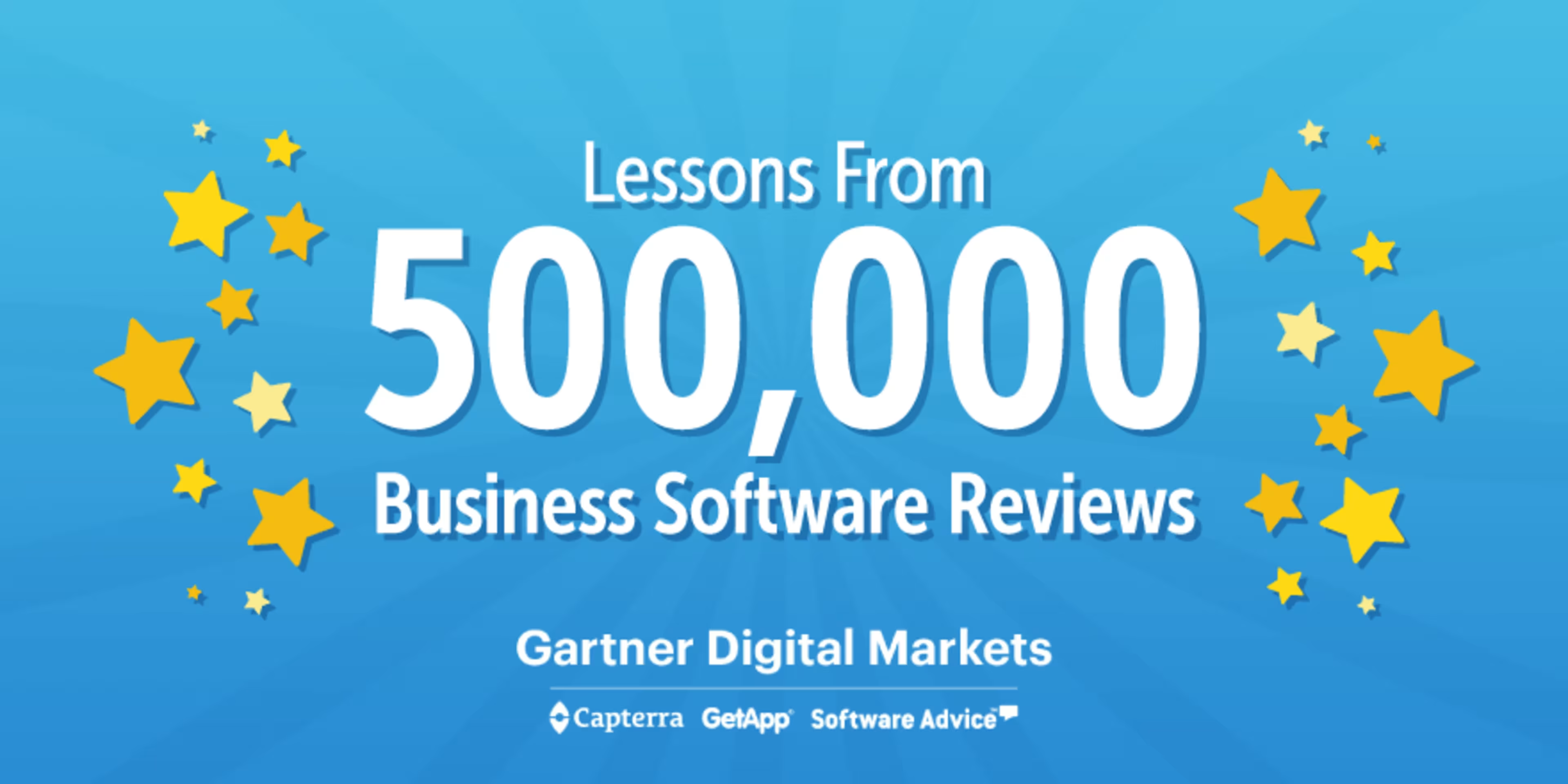
I'll hit you right away with our biggest takeaway after more than a decade of collecting and analyzing hundreds of thousands of software user reviews.
Reviews are no longer a luxury or a nice-to-have add-on to your brand and product marketing; they're a competitive necessity.
If you want to become or remain a viable competitor in the software market, you need reviews to attract customers, gain their trust, and measure up to competitors.
The volume and importance of user software reviews is rapidly expanding.
More reviews were published across Gartner Digital Markets sites in the first half of 2018 (165,053) than from 2008 to 2016 (158,222) combined. In the first half of 2018, about 50 reviews were submitted every hour. This growth rate will only continue to accelerate, and it's not limited to U.S. users.

Gartner Digital Markets' cumulative published reviews and milestones
This growth trend is global. Though most of our reviews come from U.S.-based users, almost 25% come from more than 200 other countries spread across six continents.
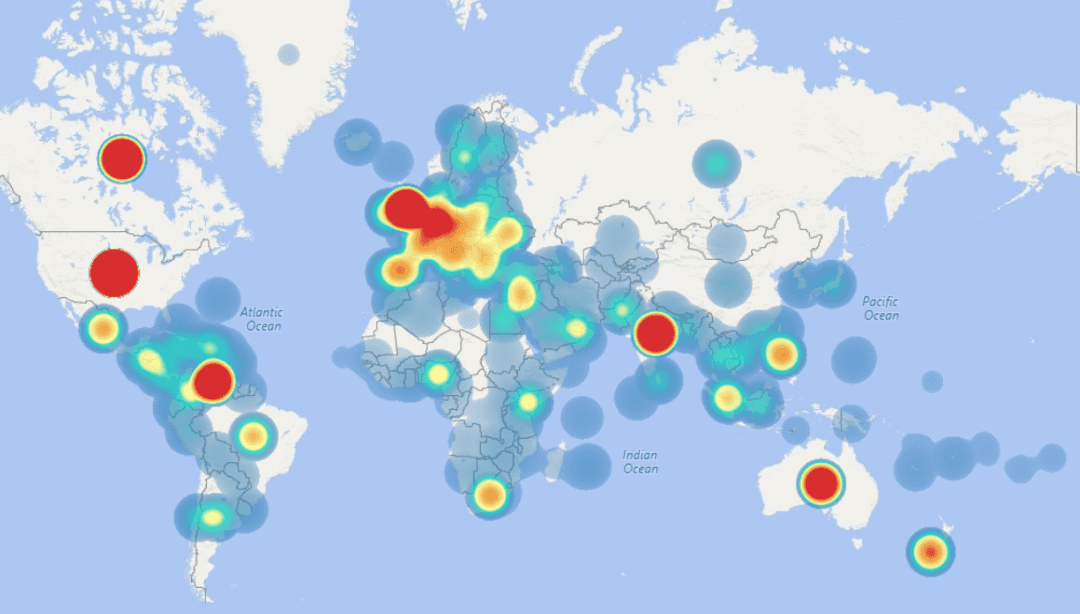
A global heat map of Gartner Digital Markets published reviews
Our reviews come from users at different sized companies...
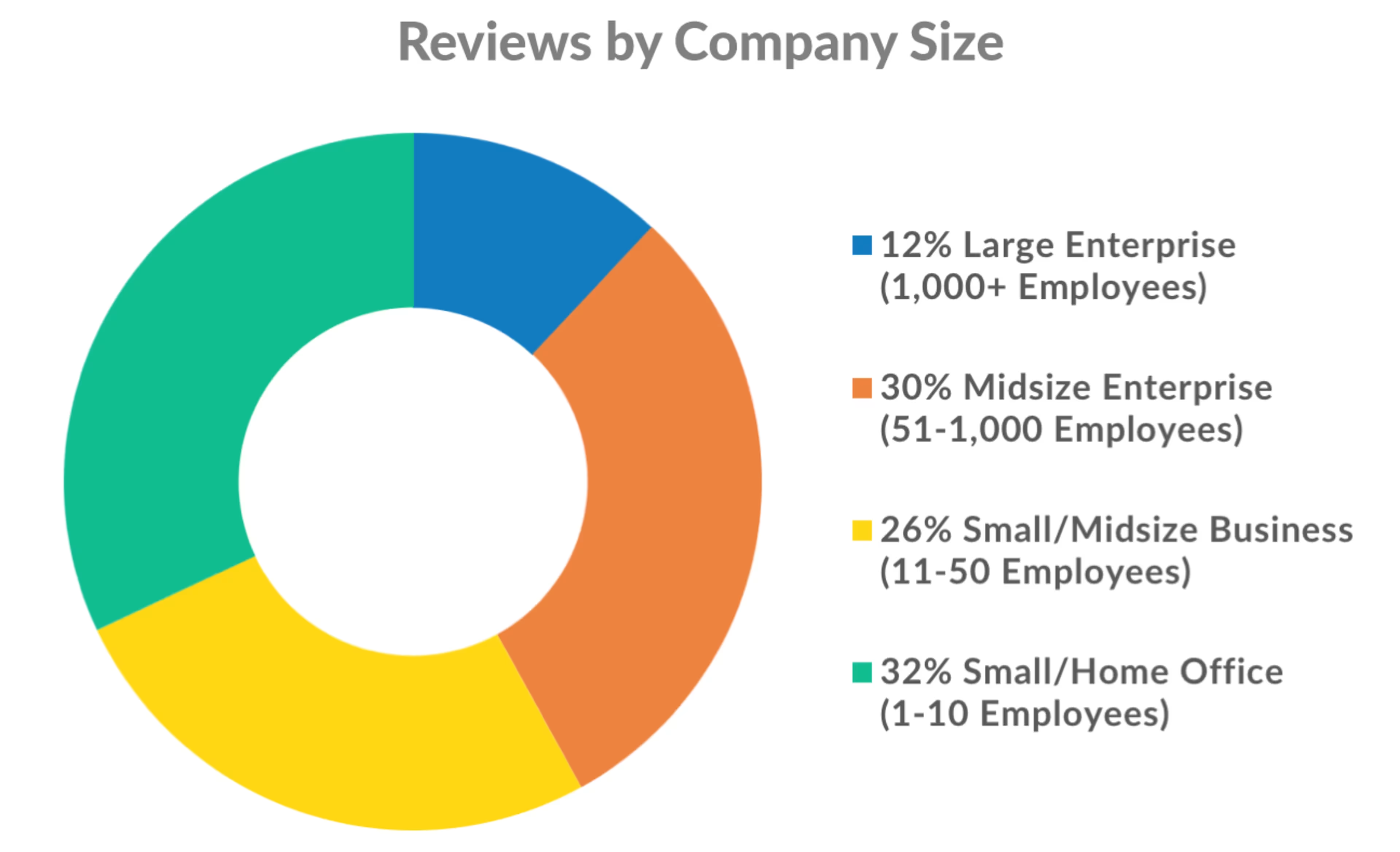
...across many industries.
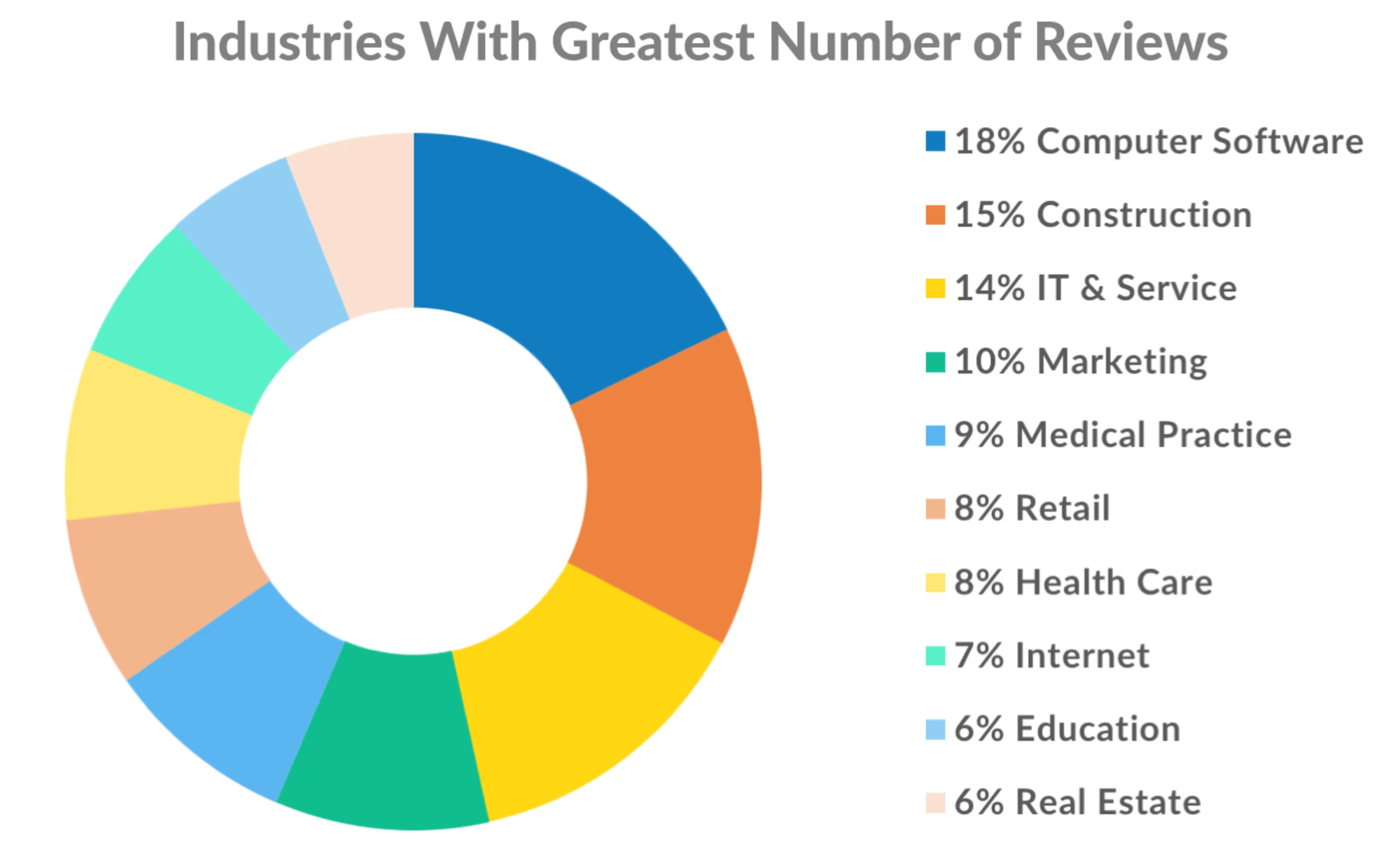
The importance of reviews to your business is growing exponentially. They're table stakes. Buyers expect them.
But you don't just have to take our word for it. You can take a look at the ten-plus years of data we've collected, which shows that more and better reviews are the key to more and better customers.
We've found that:
An additional ten product reviews on Capterra increases traffic (i.e., number of clicks) to that product by 2%.
Adding ten reviews and increasing a product's overall rating on Capterra by just 0.1 stars can increase traffic by about 2.36%.
That's a substantial increase in brand exposure, lead generation, and—ultimately—revenue, all from an incremental increase in user reviews.
Your customers—not your marketing budget or your most talented sales team—are your most valuable asset in driving new customer acquisition. Your marketing and sales pitches may educate a potential buyer, but they aren't what sells your product.
Though painting your product in its best light and illuminating its value is a necessary part of the sales process, it's not what really closes deals. Often, those messages get lost in an ocean of online information. Our research1 shows that most software buyers—especially at smaller companies—are overwhelmed with all of the choices, product information, and analysis involved in finding the right software.
In this morass of content, buyers gravitate toward user reviews. Customer opinions (read: reviews) make the software capabilities “real" for in-market buyers. They bond with the product through other reviewers' experiences.
Our research1 indicates that reviews are a primary driver of traffic, brand, and sales. Unbiased customer reviews that reinforce the value of your product help you gain trust, build credibility, and stand out from your competition. After looking at pricing and functionality, in-market buyers pay the most attention to reviews when purchasing software.
Reviews can also help you tap into your successes and learn from your failures, while increasing your market awareness and improving the quality of your product.
It's hard to overstate the value of user reviews. They provide so many benefits, to both buyer and vendor.
Let's dive into the lessons we've learned from collecting over 500,000 user reviews and look at six key takeaways on the vendor value of software user reviews and how to use them in the sales process.
1. Unbiased reviews help you gain the trust of potential customers
While your sales team can gladly (and quickly) list the top five reasons your product outshines its competitors, they also have something to gain from promoting your product—namely, their salary. Our research1 indicates that because buyers recognize that inherent bias, they actively seek unbiased sources to balance their software analysis.
Showcasing honest reviews from customers who have nothing to gain from praising your product can be the last push a prospect needs to do business with you. Plus, reviews can highlight aspects of your business that your sales team might have little experience with, such as your customer service department.
While a quick perusal of a product's site or Amazon listing is good enough for consumers to make an impulse purchase, business software buyers require more information from respected, reliable sources before making a decision that impacts their company's future.
According to our research1, in-market buyers believe that finding the right company is just as important as finding the right software. Reputation and sustained delivery of quality products and services matter. Just listen to what one interviewee had to say:
"Then it really came down to, who were the vendors out there that offer these [software products]? How long have they been in business? What's their reputation? What's the cost of the product? Can we get references from them and talk to people who have used the software?"
This means that objective, unbiased reviews are essential to winning over B2B software buyers.
During the research phase, buyers don't want to be sold. They want to learn how various products or companies can solve their specific business problems.
When collecting or asking for reviews, emphasize that you're looking for objective, honest feedback and that customers who submit negative reviews won't be penalized. On the flip side, glowing reviews won't result in special treatment.
What you need to do:
Mobilize customers to submit reviews to trustworthy third-party reviews sites. Try to achieve a wide variety of reviews that provide a good representation of your customer base.
2. Third-party sites are considered more credible than your own site
Just as your customers don't—or shouldn't—have ulterior motives to describe your product in glowing terms, trustworthy third-party reviews sites shouldn't have ulterior motives to promote your product over others.
According to our research1, customers believe that reviews on most third-party sites are more credible than reviews showcased on a software vendor's site. They view third-party sites as more independent with nothing to gain from cherry-picking positive reviews over reviews with negative feedback or low ratings.
Ideally, buyers want a mix of good and bad reviews and a balance of good and bad within each review. One buyer had this to say:
When you have a review that says the good and the bad, I think that's more trustworthy ... somebody who just goes on to say good can be suspicious, and then somebody who just goes on to say bad can be just somebody scorned.
While not every third-party site is as trustworthy as another—looking at your fake reviews, Amazon—sites that make it their mission to provide credible, honest, verifiable reviews can become valuable partners in your quest for more exposure, leads, and customers.
What you need to do:
Seek out trustworthy third-party sites that verify the legitimacy of user reviews and will work with you to ensure your product is fairly represented. Look for sites that value balanced feedback and honesty over sales and advertising. Then, enable and encourage your users to provide reviews on those sites.
Respect the independence of these third-party sites, and don't try to strong-arm them into removing bad reviews. Such behavior can give you a negative reputation and will eventually backfire.
3. Detailed information about reviewers is necessary to confirm their trustworthiness
One way to give customers peace of mind about the credibility of your reviews—whether you're hosting them on your site or via a third party—is to provide specific details about reviewers.
That doesn't mean requesting names, home addresses, or social security numbers from reviewers. But it does mean asking for detailed information concerning a reviewer's experience with the product, role within their company, company size, industry, and other information relevant to product use.
The more detail, the better. One buyer said:
"I really like those a lot, and I know a lot of other people on my team were really big on that as well. Seeing specific examples of other companies that might have been in our position, or similar to us, what their business need was, what their challenges were, why they selected the solution, and how it was able to migrate and deploy out."__
Here's an example: To verify a review for a Gartner Digital Markets site, basic identification information—such as a reviewer's name, job title, and email address—are the minimum requirements for publication.
What you need to do:
Make basic identification details a requirement in your reviews forms. Take advantage of or choose a third-party site that uses tools such as LinkedIn verification to provide another layer of credibility for reviewers. Encourage users to provide some profile details and experience specifics.
4. Showcase reviews that discuss specific problems in specific industries
Basic identification information provides credibility to your reviews, but specific details help prospects identify whether or not your product works for people like them and businesses like theirs.
If a site manager at a 20-person construction company says that your IT asset management solution works splendidly for his small team, prospects in similar roles at similar companies will be able to better envision your software working for them, too.
Our research1 on software buyers shows that buyers tend to gravitate toward people within their industry who experience the same issues and pain points. It's not enough for users to say that your software works well, they should be able to illustrate how it works and which problems it solves. As one interviewed buyer put it:
I think the most helpful [reviewers] have some kind of connection to public libraries, so that I can picture how it would work in our system. If some software is good for this public library, I could already imagine that how he's using it would be very similar to what we would do here. There's just kind of that immediate connection to, 'hey, you're doing the same day-to-day stuff that we're doing, and you probably have the same issues.'
While you should showcase reviews that provide honest feedback, you should also try to showcase a handful of reviews that detail how your product works in specific situations or industries.
What you need to do:
Reach out to clients or customers who are using your product in unique ways or situations. Get their perspective on why they chose your product over a competitor's solution. The more they can highlight how your product works for them, the better picture they paint for prospects experiencing similar issues.
5. Focus on showcasing recent reviews
If you have reviews that are older than three months, 77% of your customers think they're garbage. You're also missing an opportunity to showcase what your customers think of recent updates and additional features.
Since you're (presumably) always trying to find ways to improve your product, making customer-requested changes, and tweaking it to beat the competition, your reviews should reflect those changes and updates.
Your reviews circa 1995 aren't a selling point. Promise. And, hopefully, they don't reflect the experience customers have with your product in 2018.
You wouldn't sell your customers an outdated product, so don't try to sell to them with outdated information.
What you need to do:
Make regular reviews acquisition a top priority. Customers look at an average of seven reviews before trusting a business enough to consider purchasing their product. Combined with the fact that prospects also want to see recent reviews, that means you should plan to collect seven reviews every three months, at least.
6. Having all positive reviews hurts more than it helps
Almost all in-market buyers use reviews, but they're also largely distrustful of them. They're actively looking for trustworthiness signals; if they find only positive reviews, that seems too good to be true, and they will be skeptical.
When seriously researching a company and its products, customers would rather see a mix of opinions.
Sure, every company wants a perfect five-star image and a product that functions perfectly for everyone.
That's just not realistic. Buyers know that. One interviewed buyer put it this way:
Quantity is a big telltale…Let's say there's 100 reviews and 90 of them are going to be five-star. Obviously, that's got to be a crowd pleaser, right? Let's say, ten of them are going to be one star. There's going to be a little bit of a pool there. For me, 'Okay. There we go. There's a good percentage cut.' That's always a good telltale sign.
Don't get me wrong, you don't want to cultivate purely negative or scathing reviews. But you should try to cultivate honest reviews with balanced feedback, complete with pros and cons.
Displaying reviews that contain only positive sentiments makes it seem like your company has cherry-picked all the best reviews to trick prospects into purchasing their product. And what company wants to be perceived as tricky and dishonest?
What you need to do:
When collecting reviews, pay attention to how you're asking for them. Soliciting anything other than honest feedback won't help you improve or correct any issues, nor will it give prospects a balanced idea of your product's capabilities. Let your product or service speak for itself, and leave the tone of reviews up to your customers.
You also don't have to let negative reviewers have the last word. Start responding to all your reviews—the good and the bad. Positive reviews are easy; a simple "Thank you for taking the time to use and review our product!" will suffice.
For negative reviews, keep the following in mind:
Avoid being defensive
Apologize for a customer's bad experience
Do your best to solve the customer's problem
A sympathetic response speaks to your customer service and shows prospects that you genuinely care about their experience.
The company with the best reviews wins
Reviews are now necessary to gain the trust of your prospects and stand out from the competition. In the not-so-distant future, the company with the best reviews wins.
If you're late to the reviews game, we've got good news for you: You're actually not too late, and customers are eager to share their thoughts on your product.
Your current customers want to tell everyone how much your product has decreased their workload or made their day-to-day easier to manage. You just need to give them some encouragement and an outlet for their unbiased feedback.
That's where Capterra can help. We're the largest software user reviews outlet in the world, with 500,000 reviews from verified B2B software customers. We also have tons of information on how to gather, respond to, and leverage reviews on our B2B marketing blog.
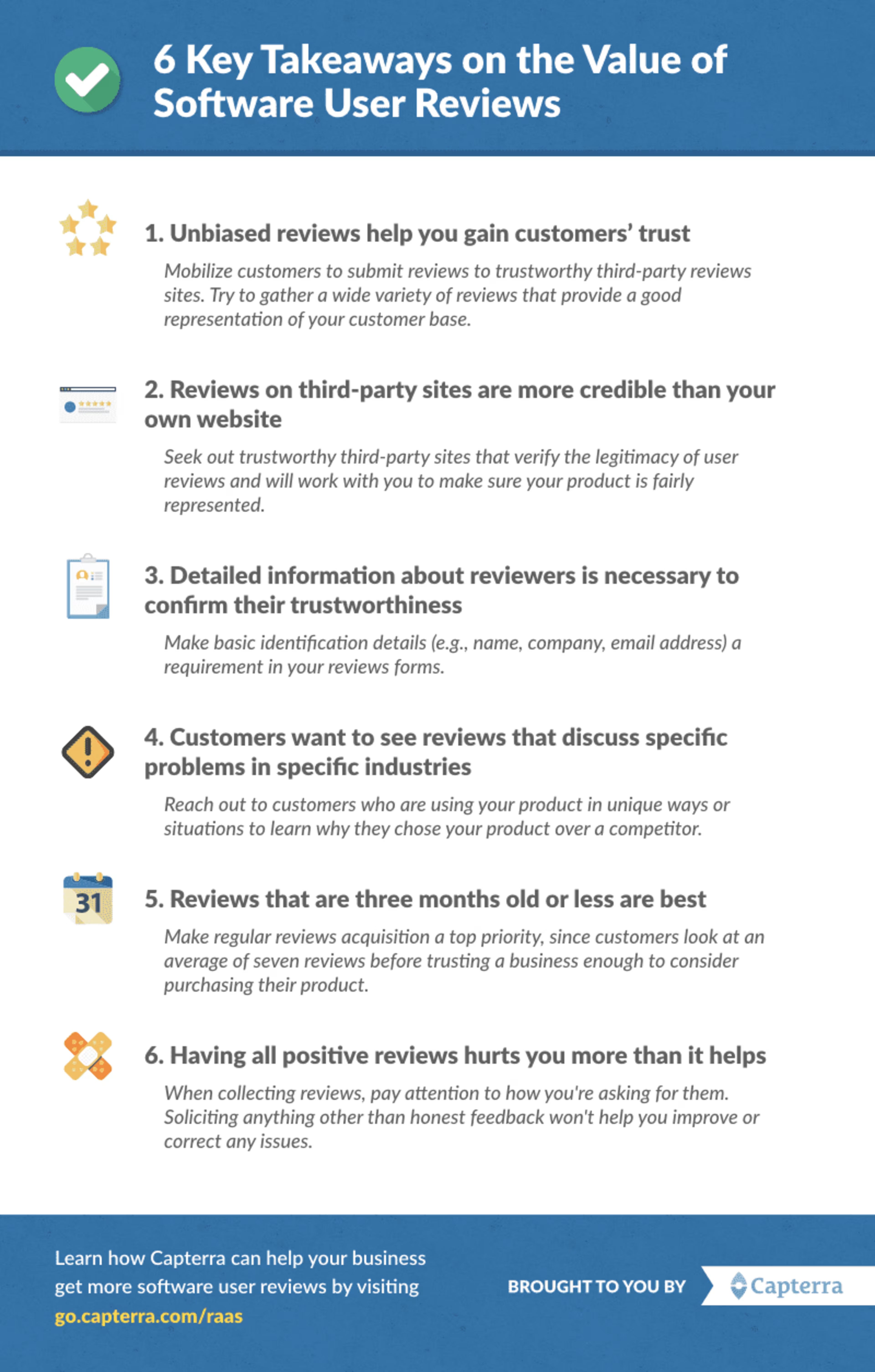
Let us know what your company is doing to successfully leverage reviews in the comments below.